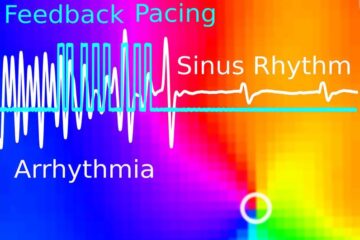Quality not quantity important for immune response to HIV

“Conventional medical wisdom tells us that the bigger the immune response, the more effective it will be in controlling HIV,” says Professor Philip Goulder, a Wellcome Trust Senior Research Fellow in Clinical Science at the University of Oxford. “However, our study suggests that this might not be the case. While most of the immune responses generated against HIV appear to be ineffective, responses targeting one particular HIV protein can bring about control of the virus.”
About 40 million people are thought to be living with HIV worldwide. The virus, which causes AIDS, is thought to kill 3 million people each year. Despite being first identified in 1981, a vaccine to prevent infection has so far proved elusive.
When HIV infects the body, it hides out in so-called “helper T-cells”. T cells play an important role in the immune response generated by the body to fight infection. There are a number of different types of T cells, each playing a different role in this battle. Helper T-cells (HTCs) regulate the body's immune response and it is the loss of these cells that leads to the development of AIDS.
Another type of T cell, the cytotoxic T cell (CTC), recognises and attacks infected HTCs. It was previously thought that the bigger the CTC response, the more effective it would be. It is this dogma that has influenced development of HIV vaccines, with the vaccines attempting to stimulate a large response.
However, Professor Goulder and colleagues found that the type of CTC response is crucial and that some types of response may have a negative effect and could actually hinder the immune response. The research, a population-based study involving investigators at the University of Oxford in the UK, Partners AIDS Research Center at Massachusetts General Hospital in the US and the University of KwaZulu-Natal, South Africa, investigated the immune responses against HIV in nearly 580 HIV-infected people in KwaZulu-Natal. It is published online today in the journal Nature Medicine.
“Some of the CTCs attack so-called 'Gag' proteins within the HIV virus, whilst others attack proteins such as the 'Env' protein on its surface,” explains Professor Goulder. “In our study group, it seems that the higher the response to the Gag proteins, the more effective the immune system was at fighting infection. However, for reasons that are unclear, the opposite was true for responses to the Env proteins, where a stronger response was associated with a higher viral load – in other words, worse control of HIV.”
Professor Goulder believes these findings may have implications for the development of a HIV vaccine.
“There seems to be clear evidence that 'Gag is good',” says Professor Goulder. “This means that rather than developing a vaccine with a spectrum of CTC responses, we may need to look at a more targeted vaccine.”
Media Contact
More Information:
http://www.wellcome.ac.ukAll latest news from the category: Life Sciences and Chemistry
Articles and reports from the Life Sciences and chemistry area deal with applied and basic research into modern biology, chemistry and human medicine.
Valuable information can be found on a range of life sciences fields including bacteriology, biochemistry, bionics, bioinformatics, biophysics, biotechnology, genetics, geobotany, human biology, marine biology, microbiology, molecular biology, cellular biology, zoology, bioinorganic chemistry, microchemistry and environmental chemistry.
Newest articles

Wildfire danger to increase due to climate change
WSL Institute for Snow and Avalanche Research (SLF) researchers expect an elevated wildfire danger in the Alpine Foreland from 2040 onwards due to changing meteorological conditions. The danger currently remains…

Advanced Brain Science Without Coding Expertise
Researchers at Helmholtz Munich and the LMU University Hospital Munich introduce DELiVR, offering a new AI-based approach to the complex task of brain cell mapping. The deep learning tool democratizes…

Gentle defibrillation for the heart
Using light pulses as a model for electrical defibrillation, Göttingen scientists developed a method to assess and modulate the heart function. The research team from the Max Planck Institute for…





















